Textured Yarn Association of America (TYAA) Annual Winter Conference
The session opened with industry specialist Peter Driscoll, of PCI, Fibres & Raw Materials, reviewing global competition in Filament texturizing.

Eduardo Rocha of Kosa, Peter Driscoll of PCI Fibres & Raw Materials, with David Darwin of Kosa
Driscoll began with an overview of global textile consumption and the outlook of the textile fiber demand over the next 10 years, indicating growth worldwide was at 3.6 percent per annum, with above trend recovery growth for 2000.
Manufactured fiber growth for the same period reached 4.5 percent per annum, with a 2.2 percent growth rate in North America and 3.4 percent in Latin America. Driscoll added that although the "textile pipeline" stocks in manufactured fibers are at an all-time low, usage will be above trend growth over the next five years.
With respect to imports, the developed economies import apparel amounting to 12 percent of the world fiber demand, with North America as a major importer of apparel, estimated at 3.6 million tons in 2000 and growing. Driscoll also stated that this growth remains in balance for textiles.
Turning to the domestic market, Driscoll said that American mill consumption is holding up because of industries outside apparel, including floor covering, household goods and industrial applications. This is in large part due to the shift in apparel and textile imports by North America, from a variety of regions, lead by south Asia and Latin America.
North American mill consumption is growing at just under 3 percent per annum, yielding production growth for polyester textile filament at 4 percent per annum, and Nylon textile filament production at nil growth. Looking across to Asia, Driscoll noted that the nylon texturizing market in countries such as Korea or Taiwan is quite small, less than 10 percent of the business. Driscoll indicated that it is not an activity that is going to aim for direct competition with US texturizers. However, the threat will be seen further downstream and showing up at the apparel and textiles levels.
Numbers for the Nafta market for nylon texture yarn is estimated at just over 100,000 tons per year, with very modest growth. Ultimately this is because apparel imports are growing strongly. Driscoll stressed that in order to stay competitive, Nylon texturizers will have to seek new applications or markets if at all possible.
Driscoll concluded that the Nafta market for polyester textured yarn, however, is somewhat higher than 500,000 tons per year, in spite of high apparel imports, with 6.5 percent growth in mill demand this year, led by Mexico. This is in large part effected by less import from Asia at the yarn level, and a need to utilize expanded capacity here at higher operating-rates. As a result, US textured polyester production is forecast to grow nearly 5 percent and Mexico nearly 15 percent.
Guest speaker Mark Vitner, Vice President & Economist of First Union Capital Markets Group, offered an overview of the global economy. Vitner predicted that the textile industry in North America was showing signs of revival, with an increase in the economy at the end of 1998, as a result of lean inventories, and continued growth in production in 1999 and 2000.
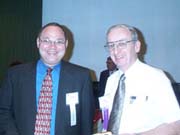
Guest Speaker Mark Vitner of First Union Capital
Vitner also indicated that the employment trend will continue, estimating that the industry will lose half a million jobs by 2010, as production/engineering continues to advance, becoming more high-tech, and/or move offshore.
Guest speaker Linda Prince of Lumpkin & Associates, addressed the challenges in dealing with today's labour force.
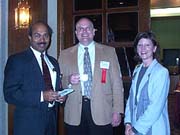
John Amirtharaj, of Universal Fiber Systems and President of TYAA, with Charlie King of Wellman and Vice President, TYAA, with Guest Speaker Linda Prince of Lumpkin and Associates
With the rapid advancements in technology, we have seen a new pool of employees. Prince reminded us that with the changing economy, comes changes in the way we do business, and the people within the market. This new economy offers higher skilled jobs to fill, and fewer people to fill them.
Prince stated that companies can no longer "assume" that all new employees come to them educated, trained, have defined work ethics, or that they will want to stay for any extended period of time. While these are all characteristics employers want and expect, they can no longer assume that this is what they are getting.
Prince went on to talk about ways to address these issues, looking at new assumptions and strategies to avoid moving into "crisis" mode when new issues arise.
Prince offered a set of guidelines, including, Corporate Direction – People want to know where the company is going, and what the expectations are to of them in moving in that direction. Feedback – Offer direct feedback on performance, and address and/or reward it. Leadership – where can staff members go for help? Who is looking out for the best interest of the employee? Develop job-specific training programs – Train staff to do the job that they are expected to do. Clear expectations and specific training can lend to job performance and employee satisfaction.
To conclude, Prince indicated that creating social ties and co-training can offer employees a sense of "team", and employers a staff that with the ability to pick up or take over before moving into crisis.
Innovations in the industry, was led by guest speaker Andre Paquin of Consoltex, discussing issues of quality and inspection.
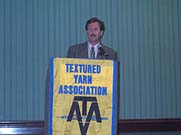
Guest Speaker Andre Paquin of Consoltex Inc.
Consoltex, operating14 manufacturing plants in North America, recently implemented a fully automated inspection system. This state of the art system, is the first system of its kind to ever be implemented into a mill.
The entire system was set up over a two-year period, with exceptional results. Consoltex has reduced their inspection costs substantially, now operates a fully automated inspection and inventory tracking system, and can optimize the data collected to assist in defining and reducing defects in the fabrics. Paquin also showed a video of their inspection operation.
Once again, the TYAA conference opened a platform to exchange ideas among industry members. With an exceptional forum of speakers, I believe members were armed with new tools to make the changes and address issues that continue to shape our industry.
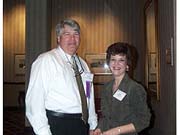
Ray Pettit of Milliken & Company With Kim Pettit of TYAA
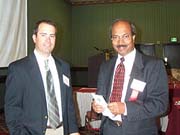
David Moniz of Goulston Technologies with John Amirtharaj, of Universal Fiber Systems and President of TYAA
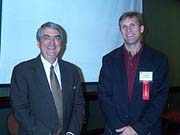
TYAA Vice Presidents Robert Howell Jr., of Dillon Yarn Corporation with Mark Hubbard of Wellman Inc.
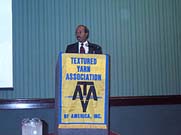
John Amirtharaj, of Universal Fiber Systems and TYAA President, Welcoming members to Winter Conference
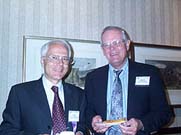
Udo Peter Schweizer of Schweizer Consulting with Michael Becker, of MSB Inc.
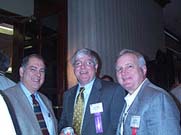
David Darwin of Kosa, with Jerry King of Milliken & company and Executive Secretary of TYAA, with Jerry Eskew, Vice President of TYAA and Day International
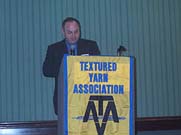
Guest Speaker Mark Vitner of First Union Capital
By Anndrea Vorobej
